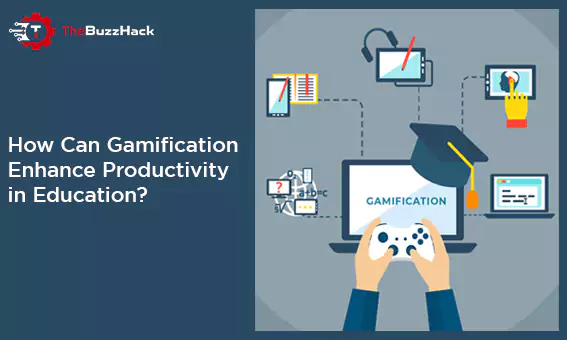
How Can Gamification Enhance Productivity in Education?
In the realm of education, the quest for innovative methods to enhance learning quality has been ongoing. One promising solution that has shown remarkable efficacy is gamifacation. This approach allows for a substantial improvement in education by making learning enjoyable and removing obstacles seamlessly.
Understanding Gamification
IT involves integrating gaming principles and elements into non-gaming entities like websites and applications, aiming to maximize user engagement. For example, numerous organisations have embraced in corporate training to elevate productivity and service standards in line with rapid technological advancements.
Gamification in Education
In the educational sphere, refers to the integration of gaming elements into traditional teaching and learning methods. The objective is to captivate students by providing engaging study experiences throughout their academic journey. Recognizing its potential impact, many institutions now advocate for gamifacation in education. This approach aids students in achieving academic goals and enhancing skills in an enjoyable manner. Additionally, it assists educators in innovating effective teaching techniques for improved student learning.
Top 5 Benefits of Gamification in Education:
- Enhanced Motivation:
By employing gamifacation, educational institutions can naturally motivate students. Assigning various academic tasks within specific deadlines, coupled with rewarding performance, encourages students to strive for progress in all activities, fostering healthy competition.
- Promoting Engaging Learning:
Traditional education methods often lead to student disengagement. Gamified apps offer incentives like badges, points, and rewards, making learning enjoyable. As a result, students focus more on studies, actively participate in activities, and pay attention during lectures, ultimately enhancing their overall performance.
- Encouraging Innovation:
Education should not only focus on scoring well but also on fostering innovation. Gamifacation, through immersive learning apps, stimulates students to generate new ideas and concepts by providing opportunities to earn rewards, thereby nurturing a spirit of continuous innovation.
- Fostering Collaboration:
Gamification encourages teamwork by assigning challenging tasks that require collaboration to complete within stipulated time frames. This approach ingrains the value of collaboration among students, a crucial skill for their future endeavours.
- Improving Problem-Solving Skills:
Apart from rote learning, education should enhance problem-solving skills. It achieves this by presenting realistic scenarios, puzzles, and mysteries that students must solve within specified time frames, honing their critical thinking abilities.
Gamification vs. Game-based Learning
Gamification integrates game-like elements into non-gaming environments for entertainment and engagement. On the other hand, game-based learning involves incorporating educational elements into a gaming environment, aiding in learning concepts through gameplay.
Conclusion
In conclusion, the quest for innovative approaches to enhance the quality of education has led to the exploration of gamification as a promising solution. Gamification, by integrating gaming principles into non-gaming entities, offers a unique avenue to make learning enjoyable and seamless, removing obstacles in the educational journey.
In the realm of education, the adoption of gamification involves integrating gaming elements into traditional teaching methods, with the goal of captivating students and providing engaging study experiences. Recognizing its potential impact, institutions are increasingly advocating for gamification in education, as it aids students in achieving academic goals, enhances skills, and supports educators in innovating effective teaching techniques.
The top five benefits of gamification in education, including enhanced motivation, engaging learning, encouragement of innovation, fostering collaboration, and improving problem-solving skills, highlight its positive impact on students’ overall academic performance and development. It is crucial to note the distinction between gamification and game-based learning, where gamification introduces game-like elements into non-gaming environments, while game-based learning incorporates educational elements into a gaming environment.
While gamification holds significant promise in elevating education quality, successful implementation requires careful planning and expertise. Collaborating with skilled professionals is essential to ensure the seamless integration of gamification into educational systems, fostering a dynamic and engaging learning environment for students.
Read More: What are the Top 5 Gaming Technology Trends of 2024?


